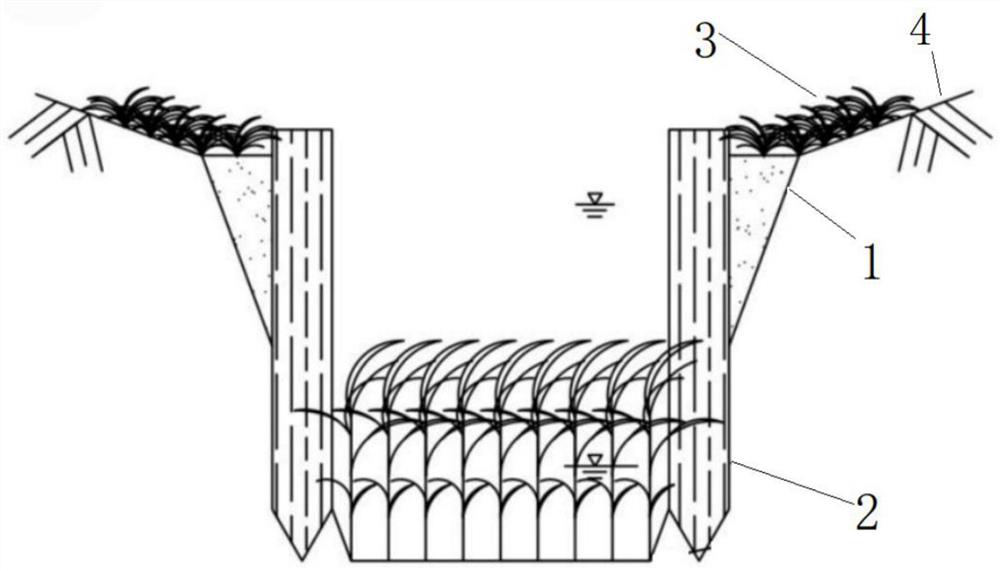Drainage basin ditch water pollutant intercepting and purifying method
A technology of water pollutants and ditches, applied in the field of agricultural non-point source pollution, can solve the problems of difficult wide-scale promotion and application, difficult operation management, high cost of construction, etc., to achieve low cost, small engineering quantity, and prevent ditch wall collapse Effect
- Summary
- Abstract
- Description
- Claims
- Application Information
AI Technical Summary
Problems solved by technology
Method used
Image
Examples
Embodiment 1
[0026] Such as figure 1 and figure 2 A method for intercepting and purifying water body pollutants in a river basin ditch is shown, comprising the following steps:
[0027] (1) Build an ecological ditch: the ecological ditch includes a ditch main body and a stake fence, and the stake fence is arranged on both sides of the ditch main body; the cross section of the ditch main body is trapezoidal, and there are edges on both sides of the ditch main body. A soil covering strip is arranged between the slope and the stake fence; a plurality of planting areas and a plurality of bare areas are arranged at the bottom of the main body of the ditch along the direction of water flow, and the planting areas and the exposed areas are Interval setting;
[0028] (2) Planting plants: plant the creeping plant Bermudagrass that can purify water quality on the soil cover strip; plant herb plants that can absorb nitrogen and phosphorus pollutants in the planting area, and the herb plants are Be...
Embodiment 2
[0030] In order to verify the technical effect of embodiment 1, this experiment is selected to carry out in the rainfall period 6-8 months and the non-rainfall period 9-11 months in the watershed of the sugarcane area, and the ditch experiment point is arranged before the rainfall period, and the ditch is located in the watershed of the hilly sugarcane area. Showing a curved shape, it can collect a large amount of surface runoff from the sugarcane area during the heavy rain period. The entire ditch is 500m long, including 8 sections of planting areas and 8 interval bare areas. The water samples at the entrance and exit of the experimental section were used to measure the concentration of total nitrogen (TN) and total phosphorus (TP). Measurement results such as image 3 , Figure 4 shown.
[0031] The experimental results show that the concentration of TN and TP in the ditch water shows a certain regularity with the distance into the river, and gradually decreases from upstr...
PUM
 Login to view more
Login to view more Abstract
Description
Claims
Application Information
 Login to view more
Login to view more - R&D Engineer
- R&D Manager
- IP Professional
- Industry Leading Data Capabilities
- Powerful AI technology
- Patent DNA Extraction
Browse by: Latest US Patents, China's latest patents, Technical Efficacy Thesaurus, Application Domain, Technology Topic.
© 2024 PatSnap. All rights reserved.Legal|Privacy policy|Modern Slavery Act Transparency Statement|Sitemap



